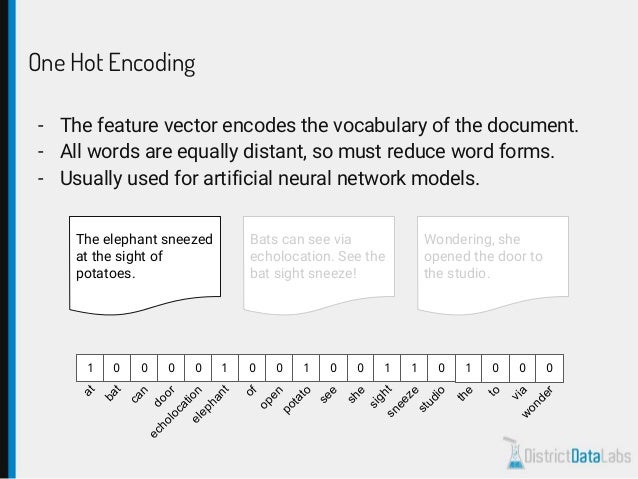

The data is referred to by the variable df in the example code below. There is also a relationship between the hml and target variables, with the value High having the lowest target rate (percentage of records where the target is 1) and the value Low having the highest target rate. There are no missing values for this variable. This can be considered as the dependent variable for a binary classification problem. target – A numeric variable which may take one of two values 0 or 1.Some observations may have missing values for this variable. The intent is to demonstrate an ordinal feature. hml – A categorical variable whose values are ‘High’, ‘Medium’ or ‘Low’.city – A categorical variable whose values may be one of 100 unique American city names obtained from the world.cities dataset available in the maps package.It comprises 5,000 observations and three variables

The data for this article was prepared synthetically and the code to prepare it can be found in the code “01_Synthetic_Data_Preparation.R” in the repository. The same is true for the words observations or rows to represent each individual data point. The words – features, variables or columns – are used interchangeably throughout the rest of the article. If you find any errors or have suggestions to improve the code, please make a pull request to the Github repository linked at the end of the article. It may also not be suitable for production, though my hope is that some of you readers will find it useful in your own work. Please note that the code provided in this article is illustrative and does not follow any software engineering best practice. Our aim is to implement each of the encoding techniques using R while minimizing the use of additional packages.

The linked article provides many useful tips along with Python code. The material in the article is heavily borrowed from the post Smarter Ways to Encode Categorical Data for Machine Learning by Jeff Hale. Categorical feature encoding is an important data processing step required for using these features in many statistical modelling and machine learning algorithms. We will also present R code for each of the encoding techniques. In this article, we will look at various options for encoding categorical features.


 0 kommentar(er)
0 kommentar(er)
